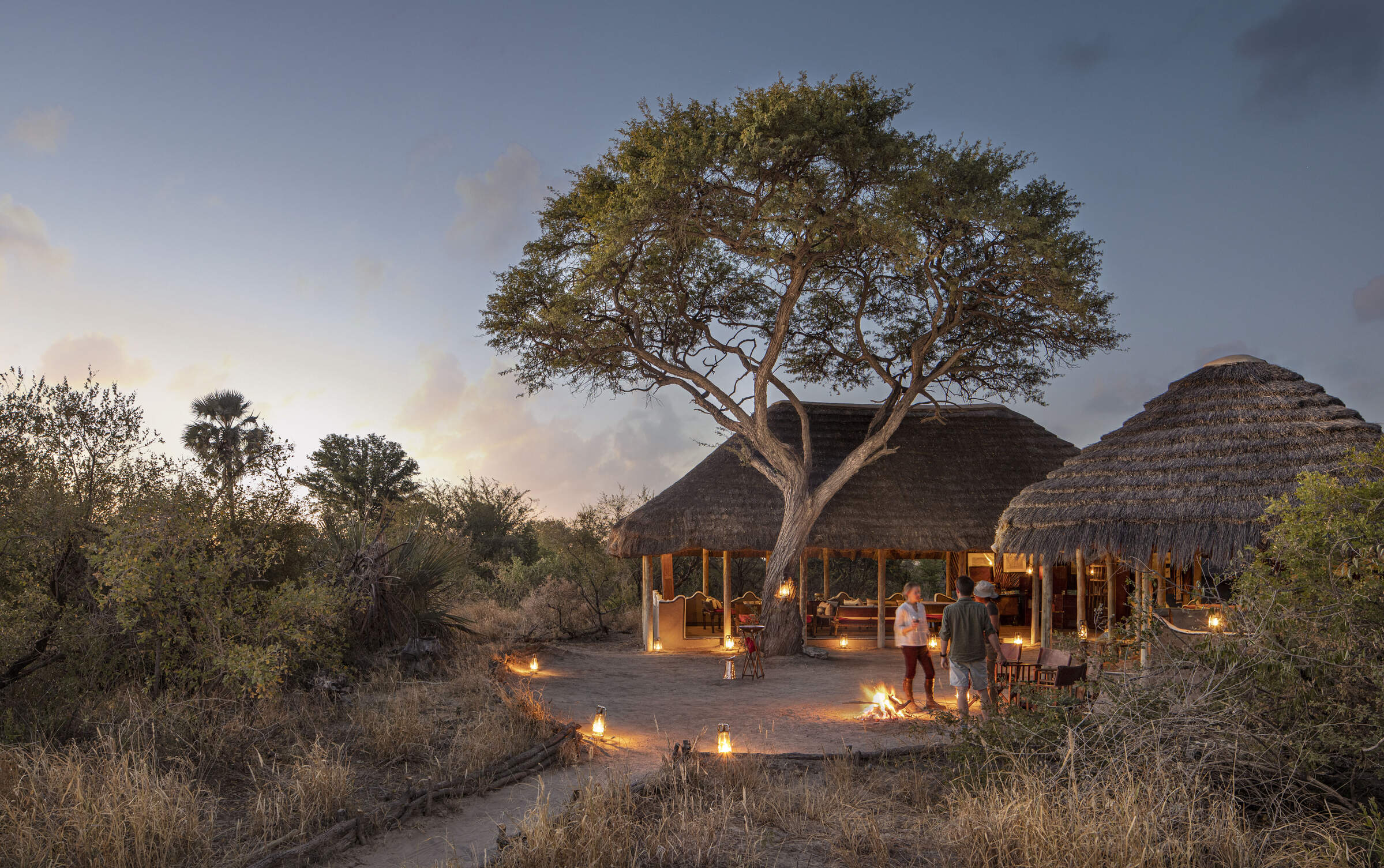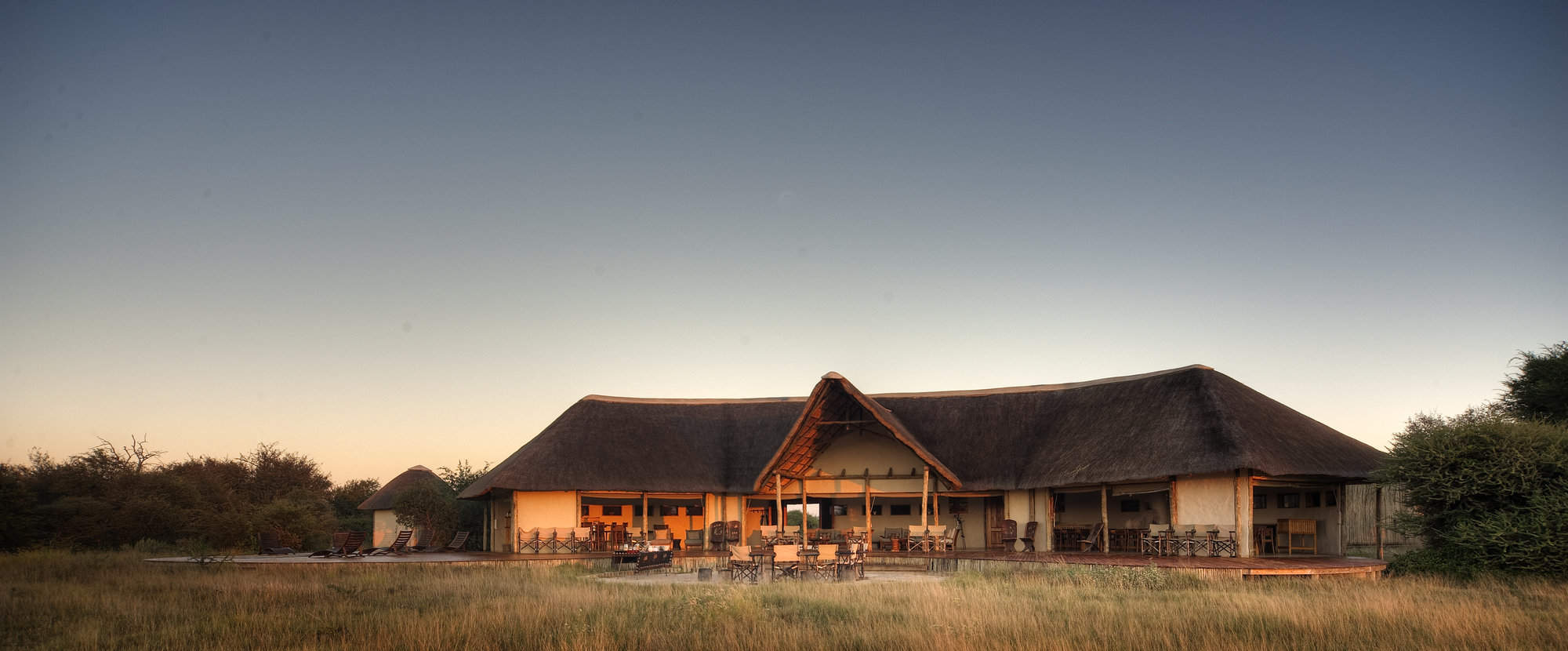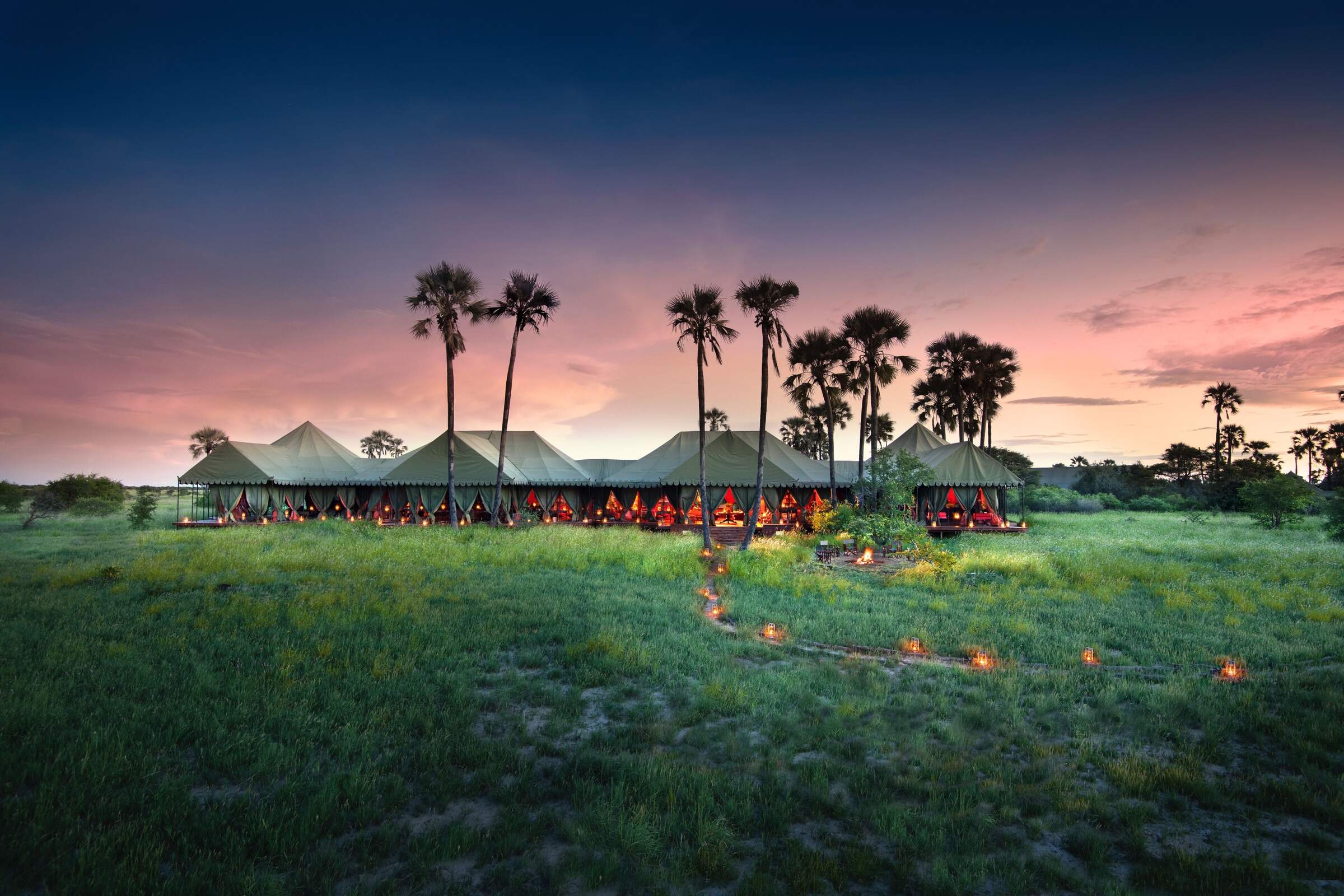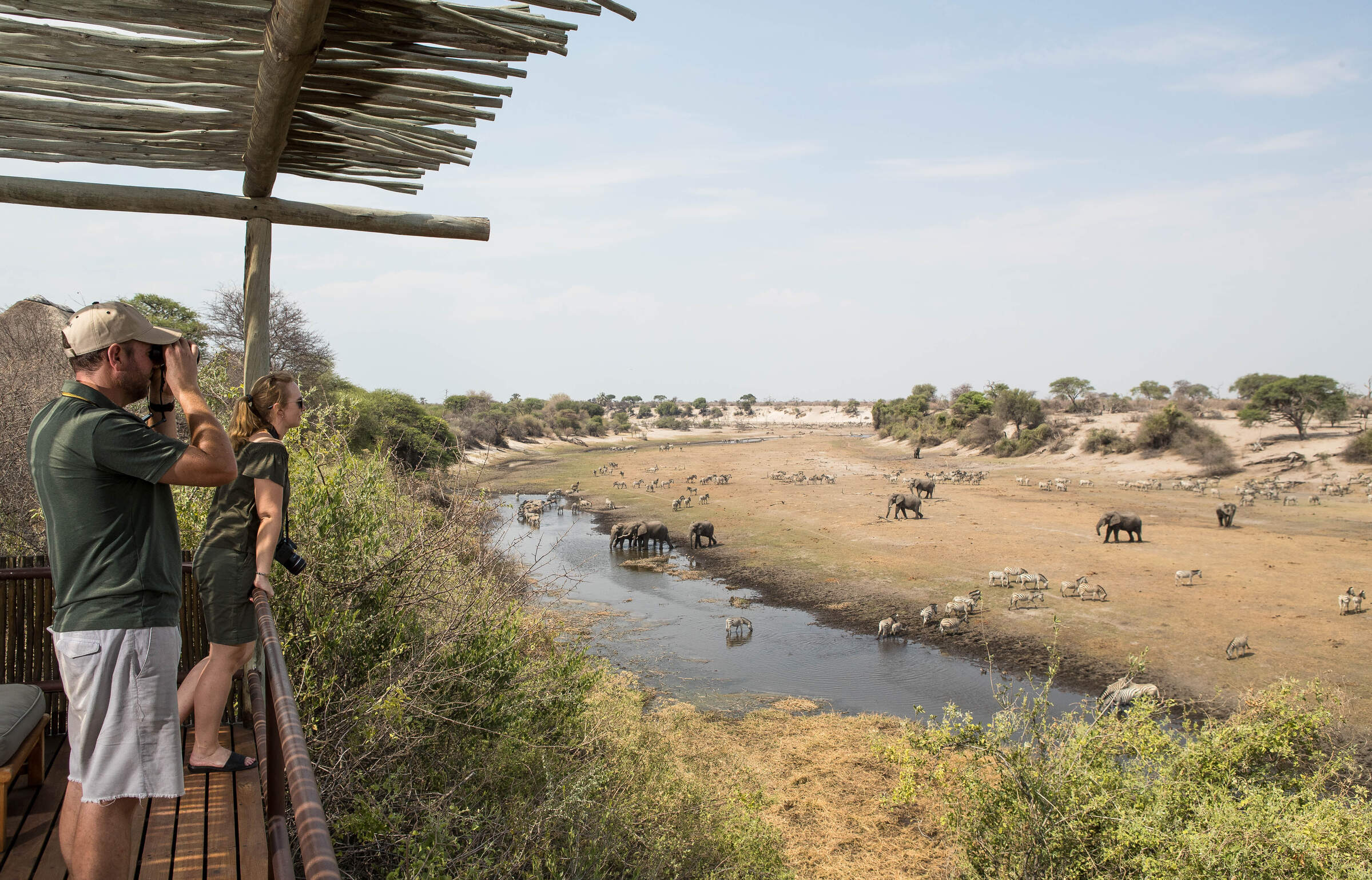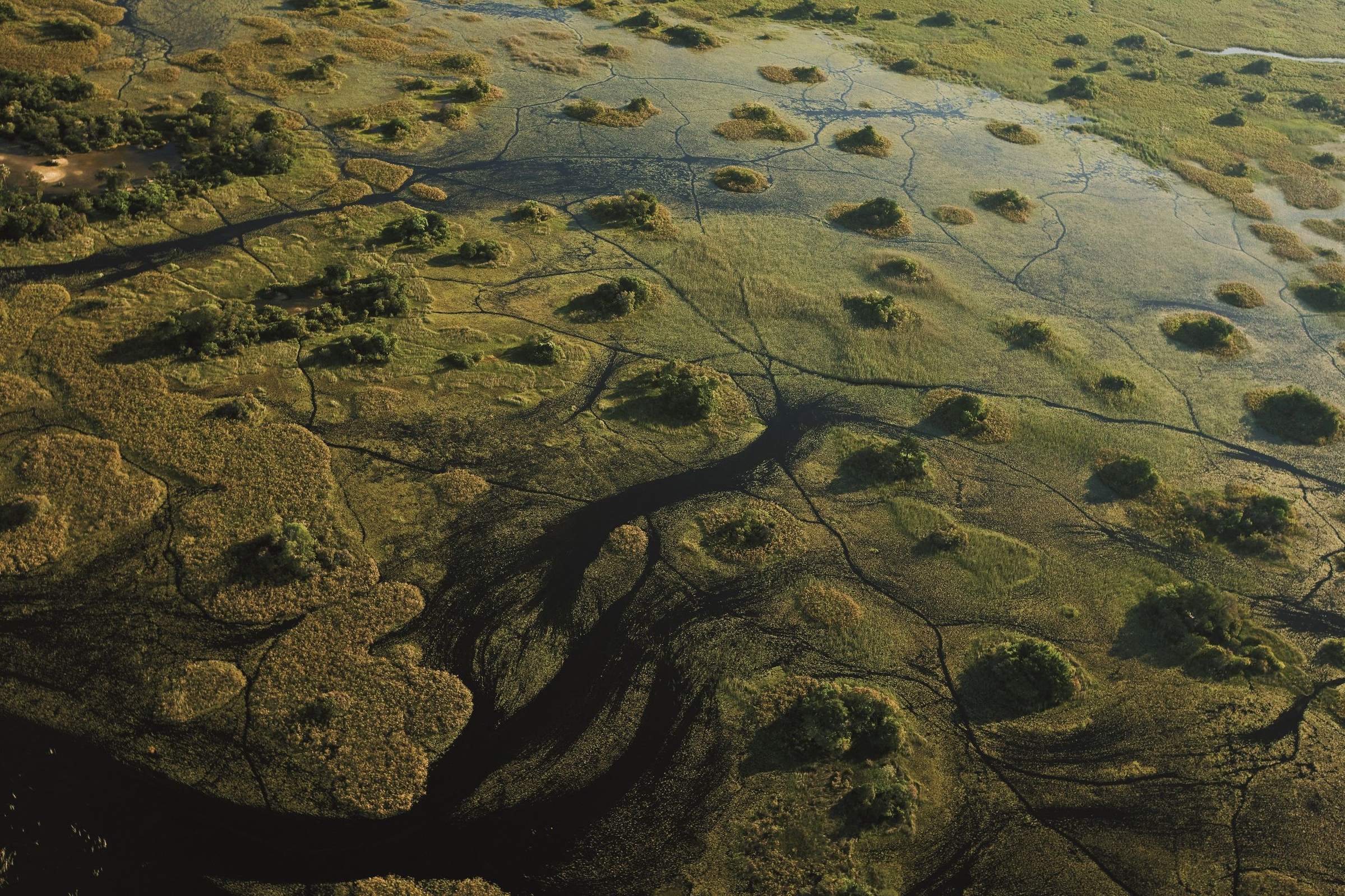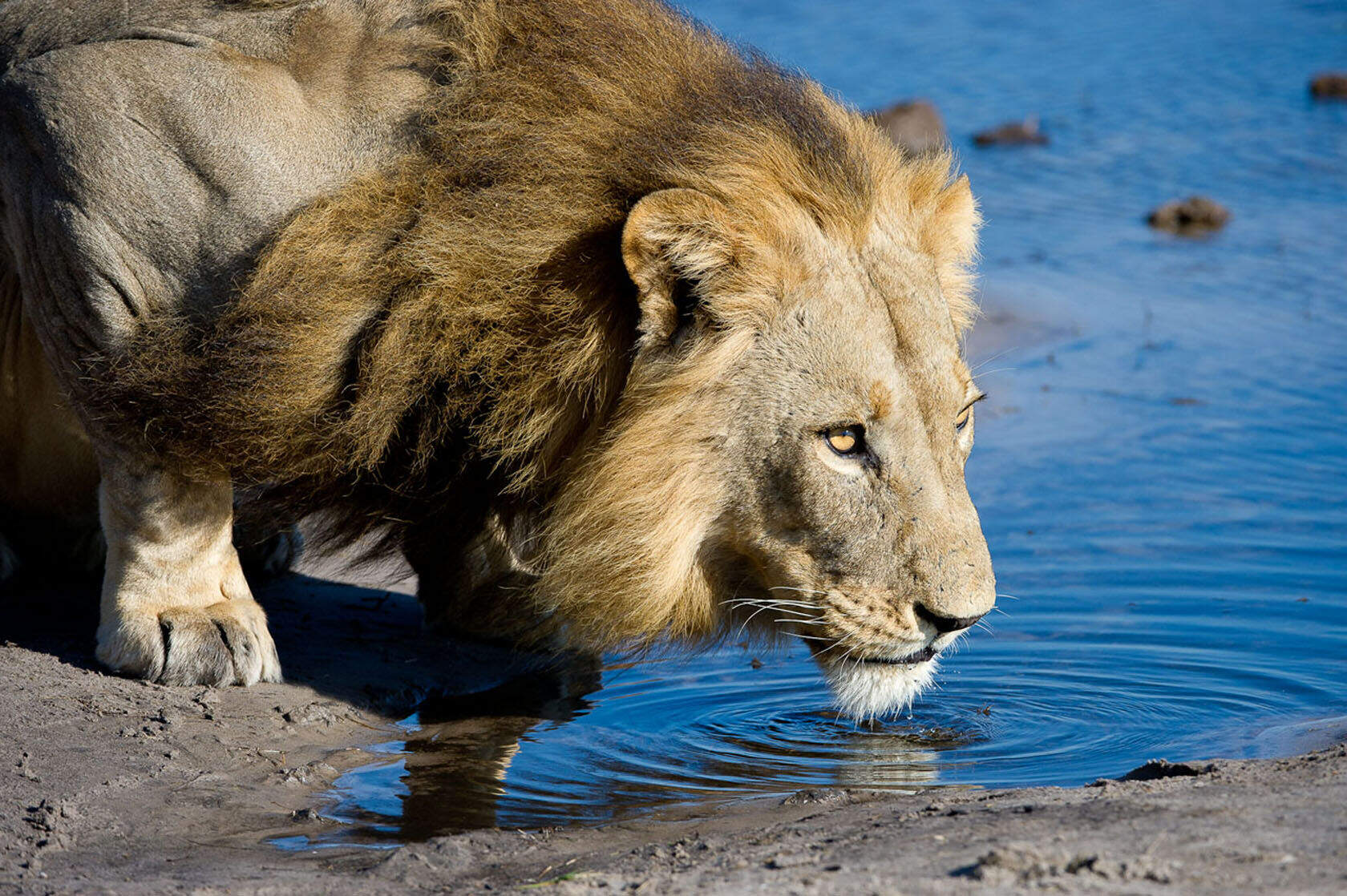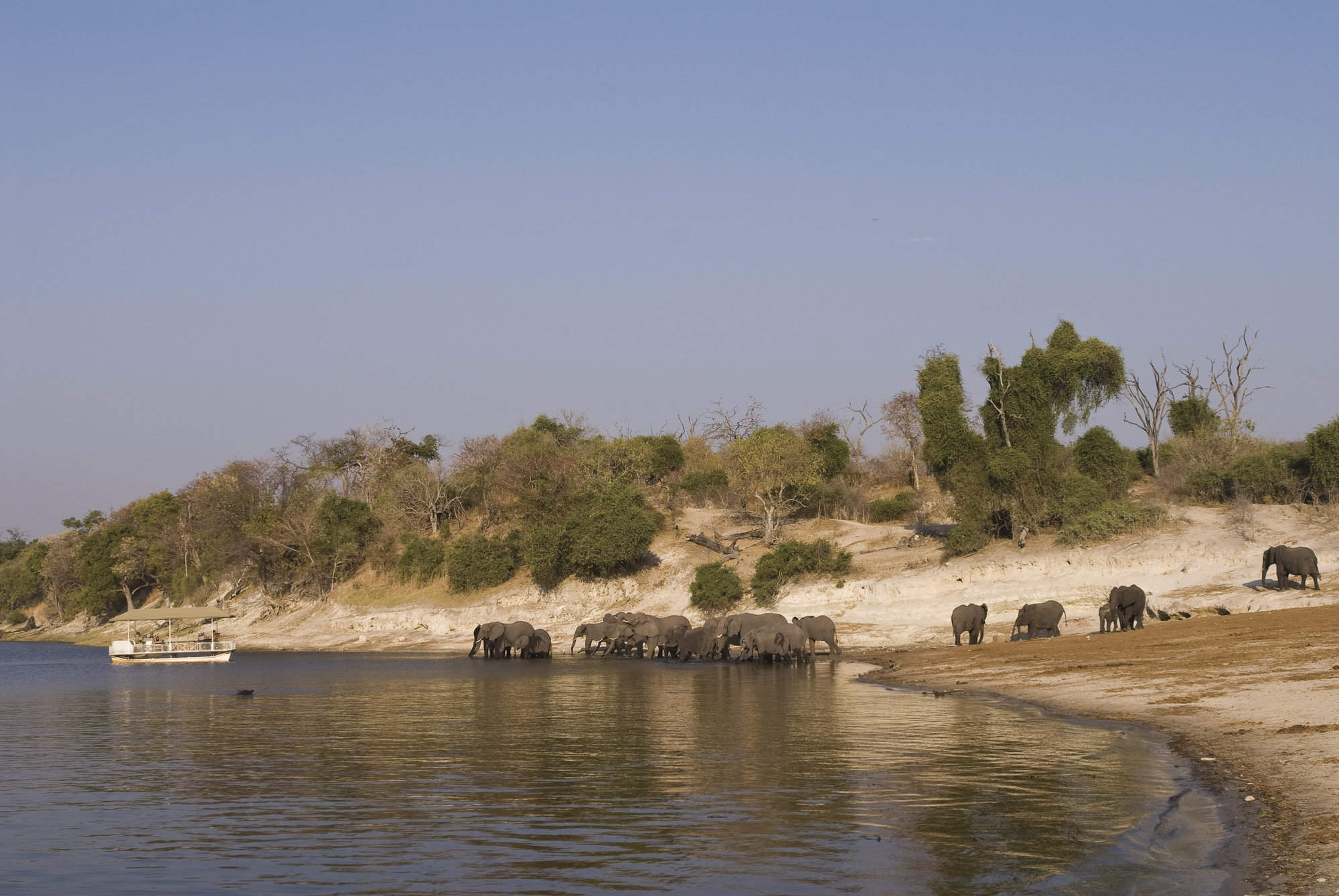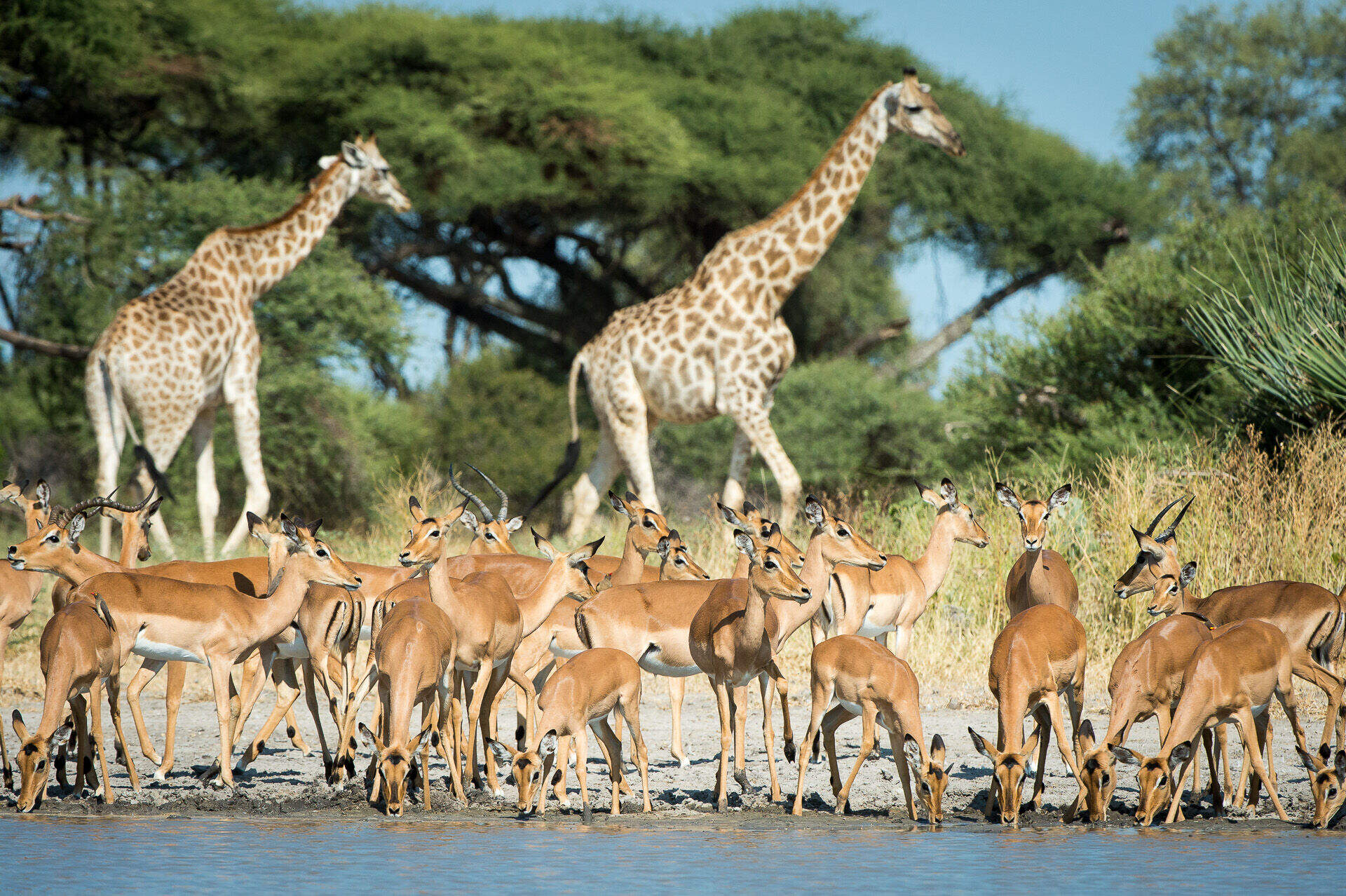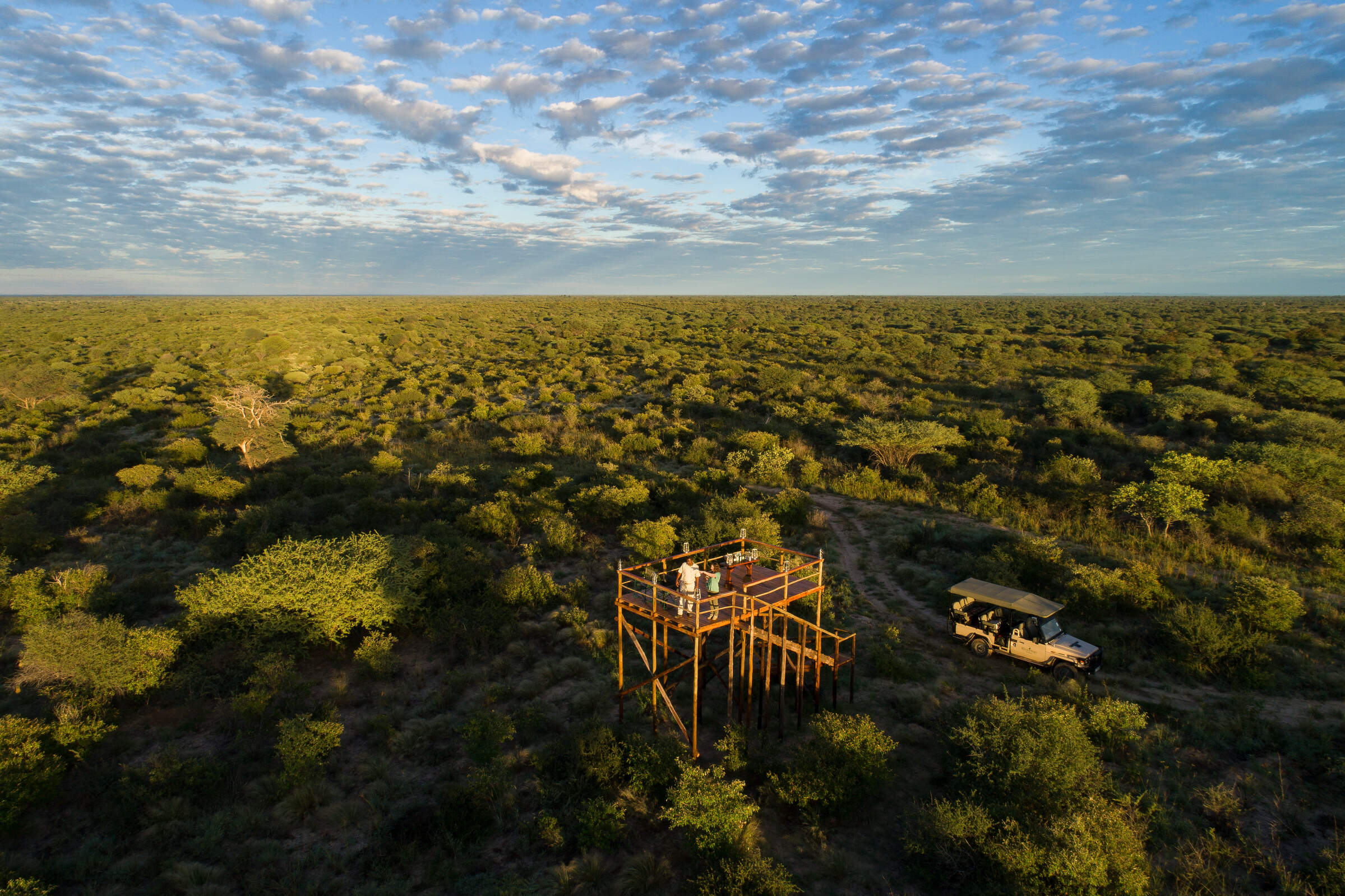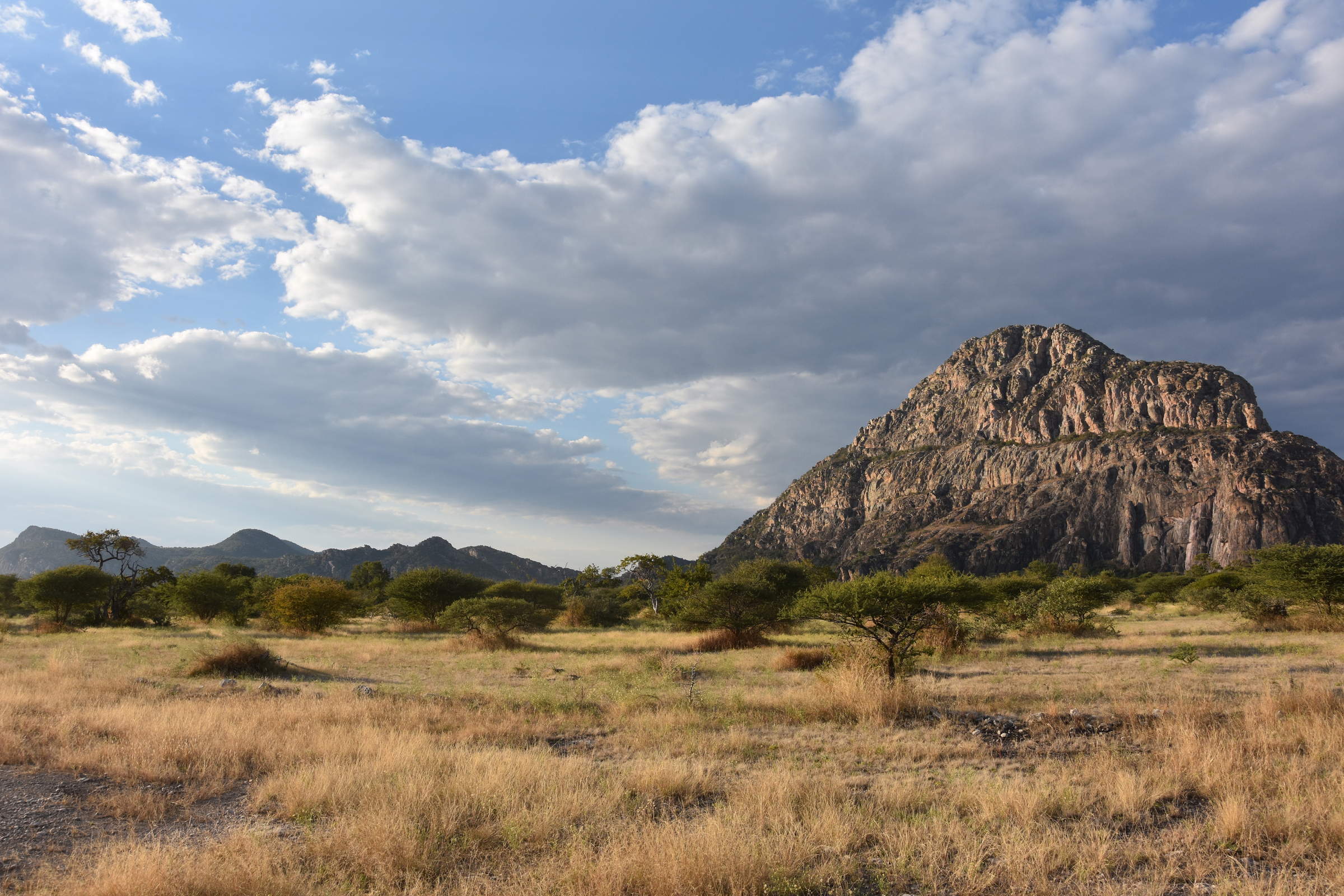Meno A Kwena: Our full report
Meno A Kwena is an old-style safari camp; the owners we know well.
It is situated on tribal land on a cliff edge overlooking the Boteti River, which began to flow again in late 2008, having been dry for over 15 years. The name Meno A Kwena is the local name for the area, which translates as 'teeth of the crocodile'.The transformation since the river began to flow again is remarkable. On our last visit, in May 2017, the late afternoon was a great time to see elephant and zebra coming down to drink on the opposite side of the river. Indeed, many visitors, especially in the dry season, choose to stay around the camp – enjoying the friendly atmosphere, the views and the wildlife. That said, the return of the river has changed the dynamic of the game in the area somewhat. Meno is no longer the hive of lion activity it once was and, whilst they can still be heard at night, lions now visit the camp only occasionally.
The tents at Meno A Kwena don't aim to be palatial – although royalty have been known to stay. The nine newly renovated meru tents are enclosed in individual kraals, all tents now have en suites connecting through the back of the tent
Sand paths through the bush link the tents to Meno A Kwena's main area. A large L-shaped marquee makes up the kitchen, bar, dining area and lounge, complete with well-stocked reference library and comfortable sofas scattered with cushions. The whole area – even the toilet – is filled with interesting skulls, bones, artefacts and photographs.
In front, a campfire and plunge pool built of rock overlook the Boteti River and onward into the Makgadikgadi Pans National Park. There are a couple of chill-out areas here, too, with comfortable sala beds and the odd hammock. During our last visit we were able to use the floating pontoon hide, this ideal for photography and game-viewing on the river (see the slideshow to the right of this page).
Two bird baths near the main area are frequented by pied babblers, crimson breasted shrikes, buffalo weavers, red-billed francolins and the occasional goshawk.
Activities from Meno A Kwena include walking trips and cultural activities with the local community. Overnight trips into the Makgadikgai Salt Pans are available on request so please ask us if you're interested. T
4WD safaris are also available, varying from short sorties in the local Khumaga area to full-day safaris with a picnic further afield in Makgadikgadi Pans National Park or Nxai Pan National Park. Visitors should be aware that although Meno A Kwena lies on the edge of the Makgadikgadi Pans National Park, the pans themselves are actually a two–four-hour drive away, so those arriving and expecting the saltpans on the doorstep will be disappointed. With the river now flowing again, access to the national park is via a one-vehicle 'ferry'.
Our view
Meno A Kwena's relaxed atmosphere, warm welcome and the team's keen interest in the surrounding area and its wildlife shine through – as does the hands-on approach of the camp's committed owner and managers. It won't be to everyone's liking – it's fairly rustic, and if you are travelling to Botswana for a pure big-game experience then it's tempting to say Meno A Kwena will not be for you. The return of water to the Boteti has started to change the dynamic here however and often game-viewing from the camp is as good as it is from the vehicle.
Looking at the bigger picture, Meno exists right on the transition zone between the unique Okavango Delta region of the Kalahari and the more typical, dryer regions further south - it's this location which makes it special. So, if you are keen to experience something slightly different from the norm with a rather quirky feel and an emphasis on the human side of life in Botswana as well as the wildlife, Meno is certainly worth a visit for at least a couple of nights.
Geographics
- Location
- Kalahari's Salt Pans, Botswana
- Ideal length of stay
- We'd recommend Meno A Kwena for a couple of nights for first time visitor's to Botswana, perhaps longer if you are a regular to Botswana and want something more than just the big game experience. We think it works particularly well at the beginning of a trip, when it offers a chance to relax after a long flight.
- Directions
- Road transfers from Maun to Meno A Kwena take about 1½ hours and are included in the camp's accommodation rate. Alternatively, there is an airstrip 17km from camp at Motopi, with a 20-minute transfer to camp available.
- Accessible by
- Self-drive or Fly-and-Transfer
Food & drink
- Usual board basis
- Full Board & Activities
- Food quality
- We have visited Meno A Kwena many times and have always found the food delicious and of a high standard; this is particularly impressive as it is all cooked over an open fire. Plenty of fresh ingredients are used together with well-made sauces and flavours.
Breakfast usually consists of cereals, fresh fire-baked bread, yoghurts, juice and your choice of eggs. The timing is very flexible, depending on the morning activities you have planned.
Lunch is usually served at 1pm and includes a main dish such as quiche, pie or lasagne with a choice of salads, finished off with bread and a selection of cheeses.
Dinners are three-course affairs that often begin with soup and end with a light and delicious dessert.
Just in case you get peckish between meals there is often a freshly baked cake for afternoon tea, and snacks to accompany your sundowner drinks. - Dining style
- Mixture of group dining and individual tables
- Dining locations
- Indoor and Outdoor Dining
- Further dining info, including room service
- No – food and drink not recommended in tents as the camp feels that they don't want to encourage any of the wildlife to enter the tents.
- Drinks included
- If booked on a full board basis then yes, except premium brands. Most spirits are available including vodka, whisky and gin. Beers, wine, water (bottled or filtered borehole water), soft drinks, tea, coffee, hot chocolate are readily available throughout the day.
Special interests
- Photography holidays
- Standing high above the Boteti River, Meno A Kwena has a cool and well-situated hide which makes a good spot for keen photographers to take unobtrusive pictures of busy wildlife scenes.
- See ideas for Photography holidays in Botswana
Children
- Attitude towards children
- Children of all ages are welcome.
- Property’s age restrictions
- Children of all ages years are accepted but private vehicles must be booked for families with children under 12 years old.
- Special activities & services
- The guiding technique at Meno A Kwena involves touching, tasting, looking and discussing, which works well for children who are keen to learn about the environment. Children's meals can be requested.
- Generally recommended for children
- Although Meno A Kwena is a very relaxed camp, and the team very child-friendly, it does still get the odd visit from lion – which do, on occasions, walk along the footpaths and around the main kraals.
- Notes
- Meno A Kwena is not ideal for those who are looking solely for game drives to spot animals, but older children who are interested in taking part and learning about nature and the environment will love it.
Our travellers’ wildlife sightings from Meno A Kwena
Since mid-2018, many of our travellers who stayed at Meno A Kwena have kindly recorded their wildlife sightings and shared them with us. The results are below. Click an animal to see more, and here to see more on our methodology.

100% success

100% success

100% success

100% success

0% success

0% success

0% success

0% success

0% success

0% success

0% success

0% success

0% success

0% success

0% success
Communications
- Power supply notes
- Solar and charging socket’s available
- Communications
- The camp has a VSat landline for their own use and in case of emergencies. Slight mobile reception is available as well as Wifi.
- TV & radio
- No.
- Water supply
- Borehole
- Water supply notes
- Water is not suitable for drinking.
Health & safety
- Malarial protection recommended
- Yes
- Medical care
- The camp has a full first aid kit available and the guides have had first aid training.
Vehicle transfers to Maun hospital for relatively serious incidents. The Medivac helicopter in Maun is always on standby for emergencies. Please note that it is only possible to fly out of camp during daylight hours as the bush airstrips do not have any lighting at night. - Dangerous animals
- High Risk
- Security measures
- Guests are escorted to and from their tents after dark.
To one side of the camp is the Boteti River overlooking the Makgadikgadi Pans National Park. The rest of the camp is surrounded by an electric fence. There are no safes, so guests are advised to keep valuables on them. Staff are always around during the day time but there are no security guards. - Fire safety
- The camp is fitted with fire extinguishers which are checked every 12 months.
Activities
4WD Safari
Birdwatching
Boat trip
Cultural excursion
Guided walking safari
Private activities
Extras
- Disabled access
- Not Possible
- Laundry facilities
- Included – collected in morning and returned the same day. A laundry bag is available in tents.
- Money
- There is no currency exchange at Meno A Kwena.
Room types at Meno A Kwena
Small Meru tent
Situated inside your kraal, your Meru-tent is about 4m x 4m in size, and set up on a concrete platform that is twice this size. The front area is partly covered as a porch, where canvas director's chairs allow you to relax overlooking the bed of the Boteti River.
Inside the tent you find twin beds parted by a central rug and a bedside table. (Two of Meno A Kwena's tents - Tent 1 and Tent 8 – have double beds instead of twin beds.) Comfortable bedding, blankets and rugs are made up with colourful but muted prints – reds, browns and blues that fit in well with the environment. A 12V battery-powered reading lamp, torch, insect repellent and drinking water are included in each tent. The tent has eight windows and a zip-up door.
A canvas wash-basin and a jug of water are set up with a small mirror and a table outside each tent, to help you freshen up during the day and prepare for bed at night. A flask of safe borehole water is provided for you to brush your teeth.
Escorted back to your tent at night, you'll find your kraal lit by the romantic light of paraffin lanterns – usually one in the toilet, one beside your washing basin outside the tent, and one on the bed-side table – which you can then blow out for safety!
Although there are no mosquito nets in the rooms, there is mosquito netting covering each of the tent windows. Bug spray and repellent is available in each room, on game drive vehicles and in the main area.
The private bucket shower differs for each kraal. However, each is surrounded by reed and stone walls and offers a view over the surrounding bush or riverbed. Two slated wooden floor platforms keep your feet clean whilst showering and towels are provided along with soap and a mirror. The bucket is filled each time a shower is requested. A natural water heating system using the solar power is planned and will soon be trialed which will mean showers don't have to be requested and can be taken any time.
The toilet room is surrounded by a concrete wall with a thatched roof and includes a flush toilet. Each toilet is different and has been decked out with pictures, bones, flotsam and artifacts. They honeymoon tent has a toilet with a view.
Water for life project
The background
Meno A Kwena Tented Camp stands overlooking the bed of the Boteti River, which forms the north-western boundary of the Makgadigadi Pans National Park. The Boteti used to be an important water source for the Makgadigadi's zebra migration, as it moved between the Makgadigadi Pans and Central Kalahari.Following a drought in the early 1980s, the Boteti River has generally been dry for most of the year, flowing increasingly rarely. For four years now, Meno A Kwena Tented Camp has been pumping water to a waterhole which sits in the dry riverbed, below the camp. This has been very popular with the park's wildlife – attracting large herds of zebra, wildebeest as well as many general game species.
In 2003, the Botswana government started to erect a new fence on the western side of the Makgadigadi National Park, roughly following the line of the Boteti River. This aimed to stop conflict between wildlife and cattle along the border of the park. However, the precise route of the fence excluded much of the riverbed from the national park, Thus whilst it is helping to safeguard the cattle prom predation, the fence has posed new problems for the wildlife by reducing their access to water in the Boteti riverbed – and by interrupting the zebra's natural migration path.
Fortunately, Meno A Kwena and its waterhole have been left on the east side of the fence, with no fence between it and the nation park. This waterhole is now the one of the very few permanent sources of water for the wildlife in the north-west of the national park.
The problem
With many animals, and very few different sources of water, life for the animals has become very difficult. The good grazing in the immediate area is under pressure; exhausted animals have to travel further each time between water and food. This is especially and issue for young or old animals which simply die due to lack of water or starvation combined with exhaustion.For most prey species, drinking is one of the most stressful things they do each day. The pressure of sheer numbers, as well as the weakened condition of many individual animals, means that many make easy meals for the local lion population. Lions in the area have learnt that driving frightened animals into the fence results in much of the hunting work being done for them.
In the last year or two, it's become increasingly obvious that one water-point is simply not sustainable to support this area's wildlife in the long term. It is imperative that additional water supplies are created north of Meno A Kwena, at sites along the zebra migration route and closer to the dry season range of the animals.
More water points further away from the fence, and along the natural line of the river bed, would help to alleviate this problem, and allow the wildlife movements to regain some of their natural balance.
The solution – Water for Life
Meno A Kwena's 'water for life' project involves the creation of more waterholes situated in areas where zebra graze during the dry season. This will reduce the wildlife/fence conflict, the strain on grazing areas and the stress on animals from predators and the limited water available to them.The first proposed waterhole is to be located approximately 10km from Meno A Kwena, near Moreomaoto Village. David Dugmore has already sourced much of the funding for this waterhole to go ahead and is now just waiting on the Botswana Department of Wildlife and National Parks' final approval.
To give an idea of the costs involved, building one waterhole costs about P113,4000 (USD 20,630), and then fuelling and maintaining it will cost about P5,000 (US$900) per month.
Each of the new waterholes must be located in, or close to, the Boteti River's bed on the east side of the fence. Although the Boteti River is now dry, and has been since 1993, the water table is only 2m below the surface.
The pump is operated by a system that combines solar power supported by a diesel engine.
Security and elephant-proofing is also a major consideration. Methods of concreting over and hiding the pipe into the waterhole are continually tested. Elephants have a preference for the freshest water and will do what they can to get as close to the source as possible. As yet, a totally elephant proof method has not been found but it gets harder for them each time. The whole operation is a lengthy and costly task but the long term effects will ensure the continued conservation of the area and the populations of the zebra and other animals.
Another reason for having the first waterhole set up near the Moreomaoto village is, with the help and guidance of Meno A Kwena, it will allow the village to set up a community-based campsite in this area, creating an income from tourism and a reason to conserve the wildlife and environment in the area.
It is proposed that David Dugmore will develop, manage and market the campsite for the village. The emphasis will be to build a simple campsite in order to keep the development expenditure low. This will allow the campsite to generate income and profits itself which will then be channeled into further community developments. Emphasis will be on the maximizing the employment benefits to the community. Tourists who use the camp will also help provide demand for small businesses such as arts and crafts.
Other lodges in Kalahari's Salt Pans
Alternative places to stay in this same area.








